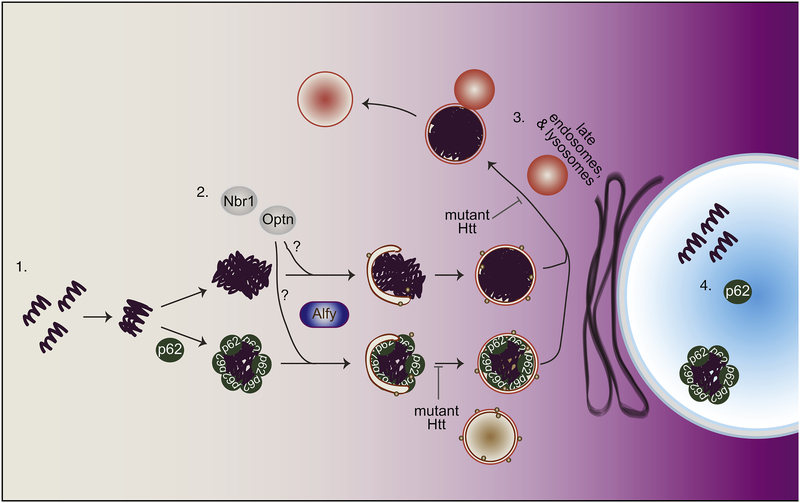Figure 1.
Schematic summary of macroautophagy (MA) in relation to Huntington’s disease (HD).
1. In the cytosol, mutant Htt oligomerizes then form aggregates in p62-dependent and – independent manner. 2. Targeting p62-positive, and possibly p62-negative aggregated proteins are then targeted to the autophagosome-membrane, with the help of the selectivity adaptor protein Alfy. Other autophagy receptors implicated in the turnover of aggregates include Optn and Nbr1, but whether then are involved together or separately remains unclear. Mutant Htt may impede cargo capture leading to the formation of empty autophagosomes, although the mechanism through which this occurs is uncertain. 3. Upon autophagosome formation, the autophagosome matures and acidifies by fusing into the endolysosomal system. Mutant Htt may impede autophagosome maturation, by disrupting retrograde trafficking of the autophagosome back into the soma. 4. In the nucleus, mutant Htt can also accumulates. This accumulation and aggregation, at least of a Htt fragment encoded by exon 1 of the HD gene, appears to require the presence of p62.

